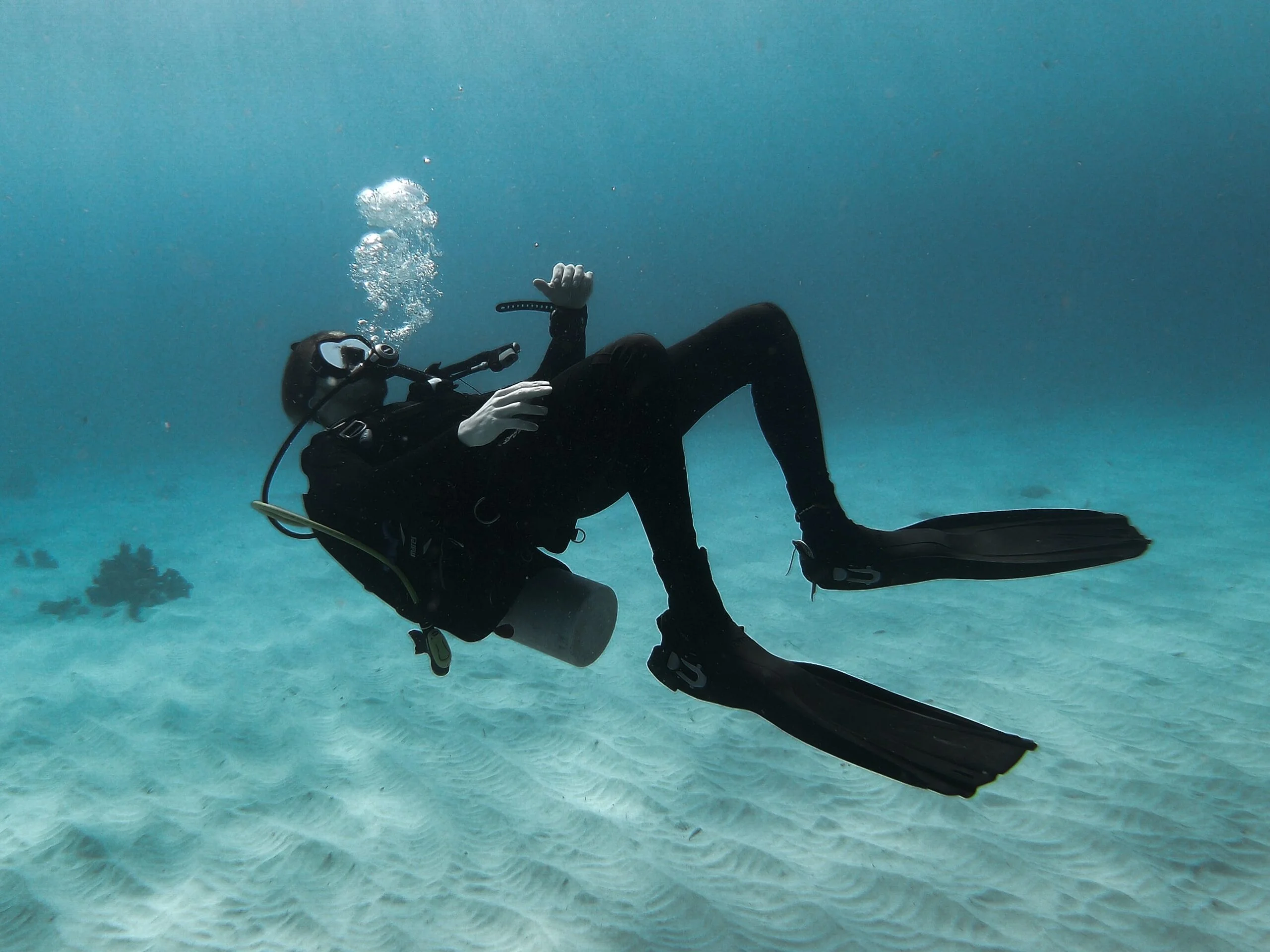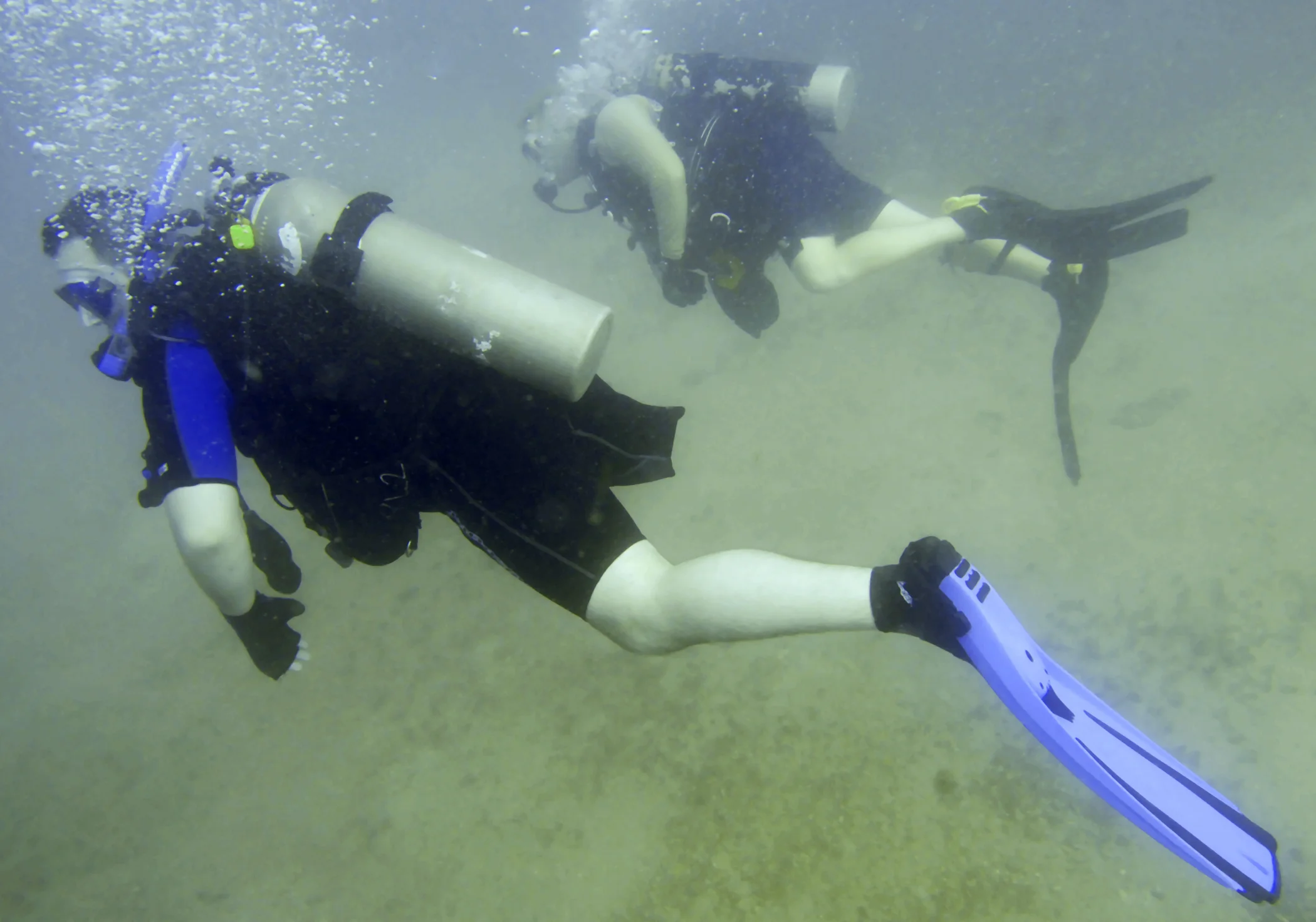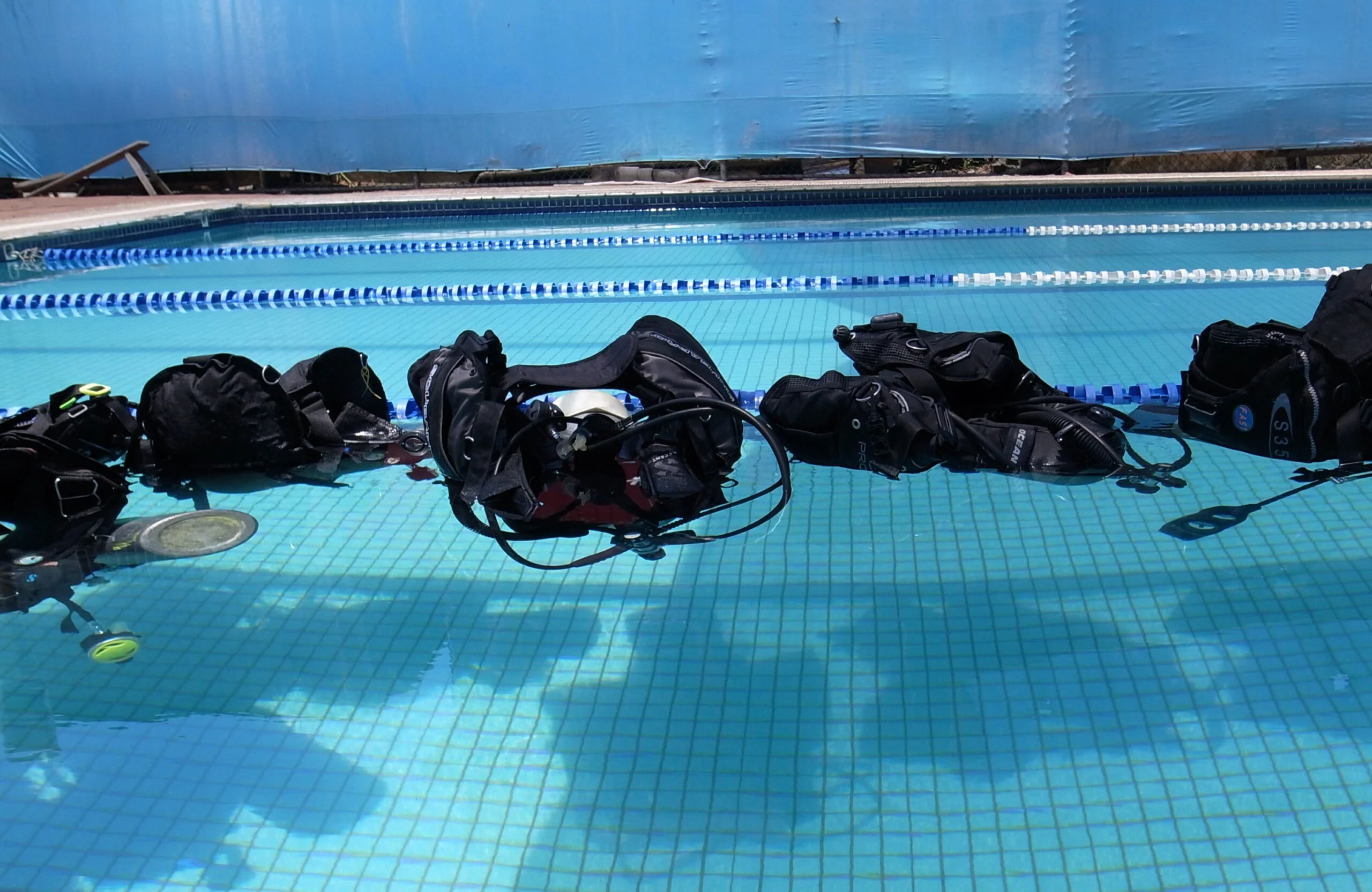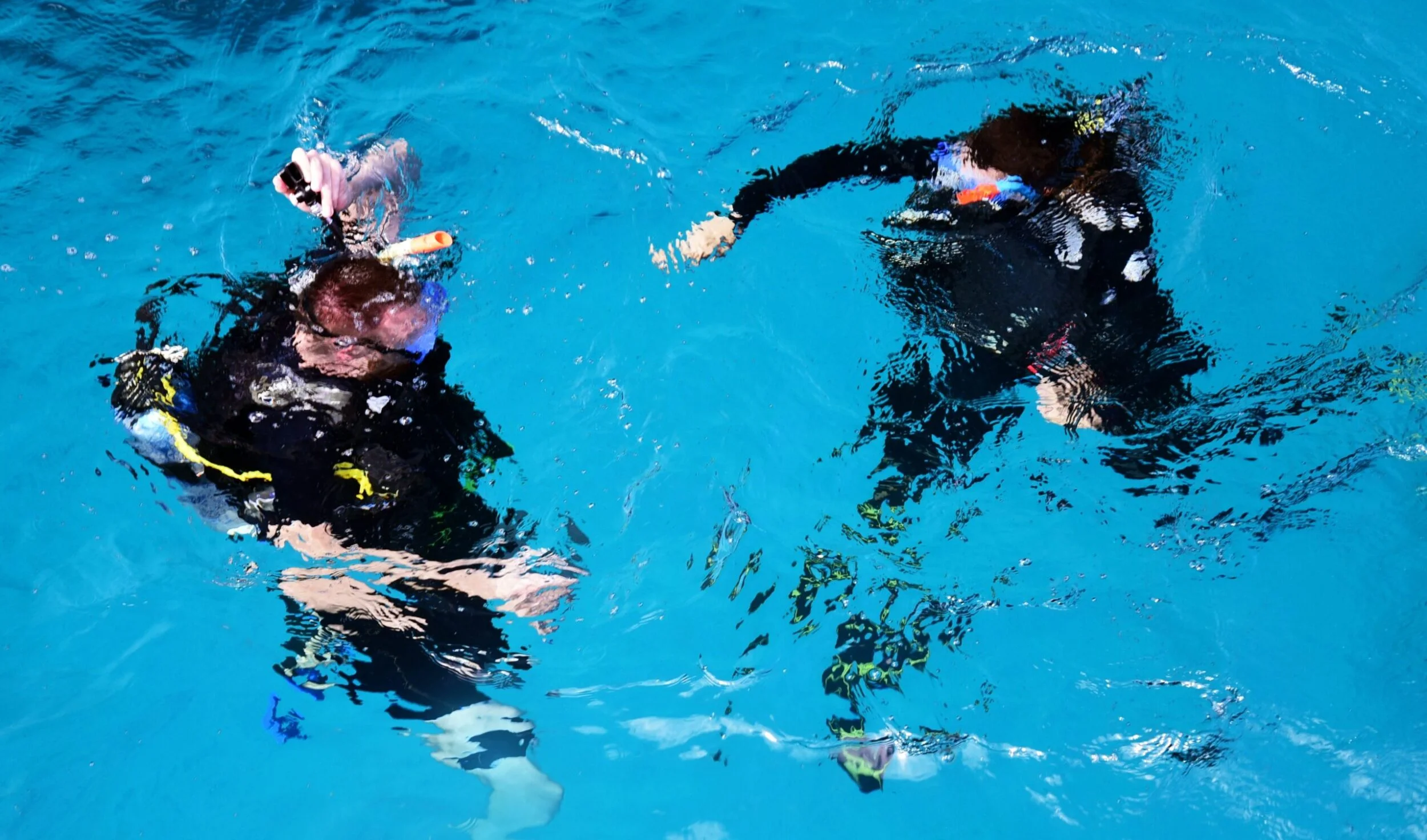Air Consumption: 10 Easy Ways To Improve It When Diving
Air consumption is something that will improve with experience—the more you dive, the better it will become. But if you are struggling to stay underwater as long as your buddy or the rest of the group, these ten tips and tricks will help you extend your bottom time. However, if you are close to two meters tall and your buddy is much shorter, you should expect their air cylinder to last longer, as they will have smaller lungs and a smaller physiological demand for oxygen. Don’t make air consumption rate a competition with other people because we are all different shapes and sizes. Simply aim to relax, follow these tips and tricks on ways to improve your SAC (surface air consumption), and enjoy longer dives.
How To Improve Your Air Consumption
1. Learn Proper Breathing Techniques

Proper breathing techniques can help you improve your air consumption while scuba diving. Keep your breathing slow and deep, and try to stay relaxed while underwater. If you are taking large, quick breaths to avoid hitting the bottom during the entire dive, you will consume more air than you really need. Try adding some air to your BCD. With a little more air in your BCD, you should be able to maintain your depth with more naturally sized breaths. If you need to add a lot of air to your BCD to be able to maintain your depth with normal breaths, you may be able to remove a weight before the next dive.
2. Have a Neutral Buoyancy
When you master your buoyancy, you will improve your air consumption while scuba diving. Practice buoyancy exercises regularly to learn how to be neutrally buoyant. Safety stops at the end of the dive are a great time to practice hovering. If you are completing your safety stop next to the line, try to maintain your depth using breath control only. As you are hovering during your safety stop, squeeze the shoulder of your BCD to check how much air is in it; it should be pretty much empty. If you need a lot of air in your BCD to maintain your depth with a near-empty tank, you should be able to drop a weight for the next dive to achieve neutral buoyancy.
3. Streamline Your Gear
Increased drag is your enemy if you are worried about improving air consumption. Streamlining your gear can help you move through the water more efficiently, thus reducing the amount of air that you use. Make sure that your BCD, fins, and other gear are properly adjusted and free of excess weight. Also, streamline yourself; you should be nice and as horizontal as possible in the water, which allows you to move forward with less effort. If you struggle to maintain a horizontal position in the water, you are probably diving overweighted. If your legs keep dropping, you probably have too much weight on your belt and could try diving with one less on the next dive.
Also, make sure your gear is working correctly and there are no leaks. If you have a steady stream of bubbles escaping from your hoses throughout the dive, there will be less air in your tank for you to breathe. Change any O-rings where there is a leak or have your equipment professionally serviced.
4. Don’t Overexert Yourself
Swimming too fast or struggling against currents can cause you to use more air per minute than necessary. Swim slowly and conserve your energy to reduce your air consumption. Racing around dive sites not only uses your air supply more quickly, but will also scare the fish away. The slower you swim, the more fish you will see and the more time you will get to spend underwater. If you need to spend time swimming against a current, try to get as low to the bottom (without touching it) as you can. The current is slowed by the bottom, and you should be able to swim against it with less effort if you are close to the bottom.
5. Be Aware of Your Air Supply
Keep an eye on your air gauge and monitor your air consumption throughout the dive. The beginning of your dive should be the deepest part of your dive. Once you notice you are getting close to being halfway through your air supply, shallow up. The lower pressure at shallow depths will mean your air supply will last longer compared to at a deeper depth.
Depending on where you are diving, there is probably a lot more to see in the shallower water too. Shallower depth means more ambient light for plants and animals to enjoy. Don’t dive deep unless there is something worth seeing at depth. When you find that you are running low on air, end the dive with a safety stop, and slowly ascend to the surface.
6. Use a Dive Computer

Dive computers can help you to track your air consumption and provide you with information on how to better manage your air supply. Modern dive computers with air integration will tell you how long your air supply will last at your current depth and breathing rate. To increase your remaining dive time, move to a shallower depth and try to relax your breathing.
If you need more information on dive computers, check the Dive Computer: Here’s What You Need to Know! post.
7. Plan Your Dive
Good planning can help you make the most of your air supply. Before you dive, consider the depth of the dive, the duration of the dive, and the type of activities that you will be engaging in. If you are expecting current during the dive, plan your dive a little shallower to compensate for the increased breathing in the current. Also, plan to move shallower during the dive. The deeper you dive, the quicker you will use your air supply. Lower pressure at shallower depths means you will take less air from your tank with each breath, which will in turn extend your bottom time.
8. Take Breaks
Taking frequent breaks during a dive can help you stay relaxed and improve your air consumption. Take a few moments to rest and observe your surroundings as you dive. When you stop swimming, pay attention to your depth. You should be able to maintain your depth with breath control alone. If you find that you have to keep swimming to avoid the bottom, you are probably over weighted and have been relying on momentum rather than buoyancy to keep you off the bottom.
9. Go with an Experienced Diver
If it is your first dive, or you’re just starting out with scuba diving, going with an experienced diver can help you to manage your air consumption more efficiently. Even better, dive with a dive professional, who should be able to give you further advice. Ask for advice regarding weighting; diving over weighted is a sure-fire way to burn through your air supply.
If you are diving with a dive professional, ask them to keep an eye on your buoyancy and dive position to see if they can offer any advice after the dive. If you think you are diving over weighted, but are worried removing a weight might make it difficult to maintain your safety stop depth, ask the dive guide if they would be able to take an extra weight, just in case you need it at the end of the dive.
10. Pay Attention During Descent
You should not sink like a stone. Descents should be controlled to ensure you can equalize on time, with the speed of the descent being controlled by your breathing; breathe your way to the bottom. Time your breathing—to begin your descent, empty your BCD and your lungs at the same time. Then, longer exhalations and shorter inhalations should be enough to enable you to descend. Descending in a vertical position, without kicking your legs, will make this easier.

A very common problem is that people think they require more weight to descend, when the solution is actually to use breath control, not to add more weight. Adding extra weight because it makes your descent easier will have a negative effect on your air consumption throughout the rest of the dive.
Our Final Thoughts
Next time you are out for a dive, keep these ten tips in mind and see if your air consumption improves. Maybe don’t try to incorporate all ten points into your next dive, but pick one or two and concentrate on those. If they don’t help, try a different point next time.
But the most important thing is to relax and enjoy your dives. Don’t spend the whole dive fixated on your air consumption; we dive to look at marine life, not to only look at our SPG! Of course, you do need to monitor your air supply, but focusing too much on your air supply will mean that you won’t be relaxed, and this can hinder any improvement. While surfacing earlier than others can be an annoyance, it’s not the end of the world.
Diving should be fun, not a constant battle with your air supply. Focus on having the correct amount of weight, slow and deep breathing, and good breath control. And enjoy your dives.
Disclosure: This post may contain affiliate links, which means that DIVEMONDO may receive a small commission if you make a purchase using these links. As an Amazon Associate this website earn from qualifying purchases.











Leave a Reply